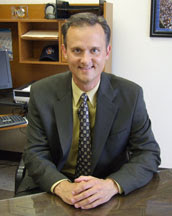Such discussions are understandably uncomfortable for those of us in public education. We wonder what our role will be in this new paradigm? If kids have access to the information we used to teach them, then what will they need us for? How can we successfully teach using Web 2.0 tools when the kids know more about them than we do? How can I use Web 2.0 tools in my classroom when my administrator doesn't see the value? How can I justify the use of these technology tools to parents who want their kids taught as they were? All of these questions make us justifiably uncomfortable. However, as I recently read, "If you aren't uncomfortable in education right now, you aren't paying attention."
One of the blogs I follow is Dangerously Irrelevant, which focuses on issues surrounding technology, leadership, and the future of our schools. One of his recent posts was a summary of three sessions spent at a conference where Will Richardson was one of the featured speaker. Will Richardson is a well-known presenter who focuses on 21st century learning skills and how they are impacting student learning. In perusing the author's notes from this presentation, I discovered a YouTube video that Richardson used to illustrate how Web 2.0 is changing education and the role of teachers.
In this video, there is a twelve year old boy who has unsuccessfully been trying to make a bow drill set. He decides to make a YouTube video asking for help. In his video, he shows how he is trying to accomplish this, and then openly asks for people to identify what he is doing wrong. As Will Richardson stated, here is what this twelve year old understands.
- He assumes there is an audience and they will respond.
- He's comfortable asking for help.
- He views YouTube as a learning tool.
- After only 101 views, he had 10 comments giving specific idea/suggestions to help.
- He knows that YouTube gives him the ability to send his question out to 1.7 billion people.
Because we no longer need to be the disseminators of information, we can focus on the development of application, synthesis and evaluation skills with our students. We can work alongside them in inquiry and problem-based learning opportunities. We can assist them in learning to evaluate and categorize the vast information available to them. We can help them to make global connections via Web 2.0 to enhance and reinforce their learning opportunities. We can facilitate their use of Web 2.0 to collaborate meaningfully with their fellow students outside the four walls of the classroom. The possibilities are endless...if we are open to our role changing. Instead of delivering information, educators can become invaluable in our new role as facilitators of learning.
As always, I would be interested to hear your thoughts on this subject.

 He salvaged most of them and spent years fixing them up so he could drive them. He didn't believe in having an antique car that you couldn't drive. As a result, my grandpa driving his old cars was a common site in my hometown of Assumption, IL. Now that I have survived both the wake and his funeral, I have had a chance to reflect on how the life he led is so similar to the message I shared with teachers on opening day.
He salvaged most of them and spent years fixing them up so he could drive them. He didn't believe in having an antique car that you couldn't drive. As a result, my grandpa driving his old cars was a common site in my hometown of Assumption, IL. Now that I have survived both the wake and his funeral, I have had a chance to reflect on how the life he led is so similar to the message I shared with teachers on opening day. He not only taught his grandkids to water ski, but he taught many of my high school friends as well. He understood that his time was a gift he should share with others.
He not only taught his grandkids to water ski, but he taught many of my high school friends as well. He understood that his time was a gift he should share with others.



